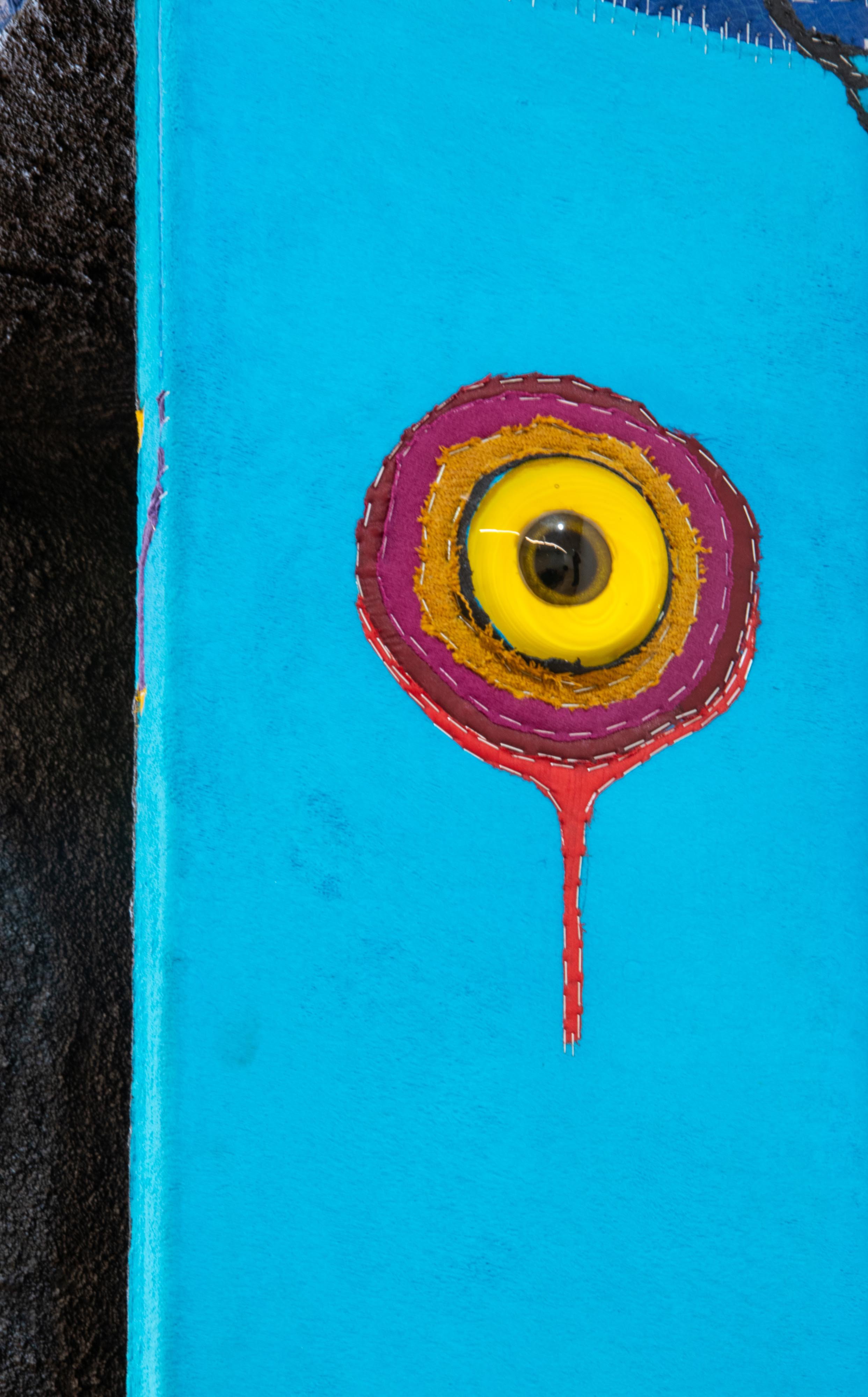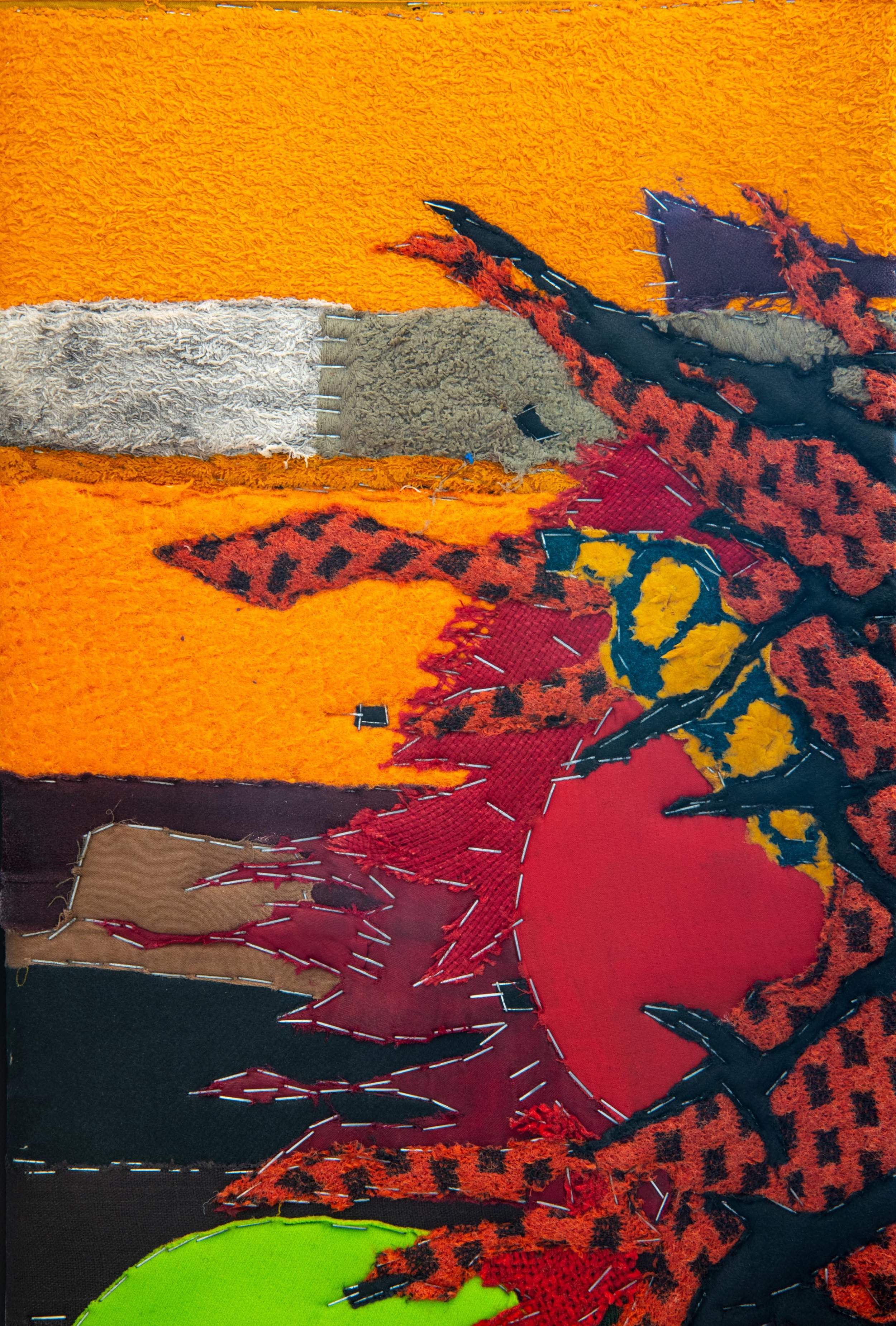Pedro Wirz
sadnest
Thurs, September 29 - Fri, November 18
Opening Thurs, Sept 29, 6-9pm
****at Kai Matsumiya's new location***
264 Canal Street 5E
New York, NY 10013
On September 29, we inaugurate Kai Matsumiya’s new gallery space at 264 Canal Street with a solo exhibition by Swiss-Brazilian artist Pedro Wirz. Following Wirz’s presentation at the Kunsthalle Basel in 2021-22, sadnest continues the artist’s investigations into the interlinked realms of the organic, synthetic, and technological as they relate to radically altered and rapidly changing perceptions of the environment.
Wirz decomposes sets of stories, images, organic matter and cast-off materials in an attempt to find meaning in the ongoing battle between extinction and renewal in the natural world. Using scraps of textiles and mineral components such as soil and tar, he has constructed a sequence of floor-based sculptures and five wall reliefs, along with a group of glazed ceramics that together comprise a trophy set of cleanly cut steaks made from butchered animals in the middle of a dying twitch.
Entrants will encounter the sight of a wound stitched along the border of a wall relief placed near the gallery’s elevator. A bloom of red mesh fabric ruptures the body of a snake, itself rendered in layers of colorful discarded cloth. The mortal wound also demarcates the start of the show’s unfurling, though implied, narrative, culminating in a final wall relief with a similar wound-like cavity. Perhaps as a nod to the local painters who may sometimes be described as practicing wittingly or unwittingly “naïve art” with its emphasis on craftsmanship and non-academic aesthetic vicissitudes within certain areas in Brazil, Wirz incorporates such colorful maximalist practices as the absolute starting point.
Taken literally, a wound may also be a nest, a nutritive macrobiotic meal for microorganisms. It is an end and a beginning.
The reliefs become increasingly abstract as visitors progress through the exhibition. Animals such as lizards, birds, and snakes migrate to the edges of the frames, pushed from the center by encroaching areas of soil coated in black tar. A central streak of bare soil remains exposed in three of the works, one organic and serpentine, the others geometrically rigid. When viewed head on, they might imitate the shape of an enlarged, switched-off cell phone or human-scale coffin. Formally, the pieces are stark, monolithic, and rectilinear.
Shall we look at these pieces as elegies lamenting the loss of environmental diversity, ‘swan songs’ to endangered species? Or could Wirz’s arrangements look beyond such loss, towards potential mutations and forms of life yet to be conceived? A volcano might annihilate life on a massive scale, but when lava and ash disintegrate, elements are released that generate fertile soils and abundant harvests in the years following an eruption. The final wall relief, with its volcanic contours and womblike crater, recalls just such destructive and creative potential. It’s “baby,” a smaller component relief in the show, also contains a wound.
Walk down the end of the platform and you will see a peek of Craig Kalpakjian’s Silent Running (2020-2022) in our viewing area, once again reinforcing the constant interplay between ecological and technological wrongs made right, and wrong again, where the most wrong circumstance can end up in the best way possible.
Pedro Wirz (b. 1981, Pindamonhagaba, Brazil) lives and works in Zürich, Switzerland. This is his fourth solo exhibition at Kai Matsumiya. Forthcoming exhibitions include a solo show at Galerie Nagel Draxler, Cologne, Germany and a group show at Centre d’Art Contemporain Genève, Switzerland. In June, 2022, Wirz completed a large-scale commission for the SKKG (Stiftung für Kunst, Kultur und Geschichte), presented at the Schaffen Museum, and a permanent public installation for Health Center for the Alter Mathysweg (Zurich). He is a recent recipient of the first edition NanoARTS Prize granted by The Swiss Arts Council Pro Helvetia and the Adolphe Merket Institute to artists and scientists interested in stimulating exchanges between art, science, and technology. He also received a 2022 Pollock-Krasner Foundation Grant, and a 2020 award winner of the City of Zurich Kunst Und Bau competition. Recent solo exhibitions include Environmental Hangover, Kunsthalle Basel; Termite Terminators, Marc Selwyn Fine Arts (LA), Tooth of a Giant, PhillipZollinger (Zurich), and Verwaschen at Galerie Nagel Draxler (Berlin).
download press release



































